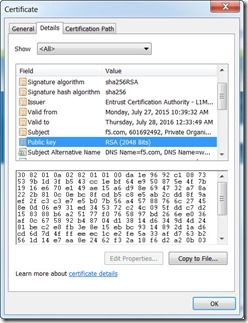Real Cryptography Has Curves: Making The Case For ECC

 Cirrocumulus
CirrocumulusIf you find this article while looking for information about elliptic curve, see this solution: https://support.f5.com/csp/article/K12982
I added a comment to the solution to be updated, as it does not include curve25519 that was added in 14.0.0.
https://support.f5.com/kb/en-us/products/big-ip_ltm/releasenotes/product/relnote-bigip-14-0-0.html "Support for ECC curve25519 The BIG-IP system now supports Elliptic Curve Cryptography (ECC) curve25519, for use with cipher strings that specify Elliptic Curve Diffie-Hellman (ECDH) key agreement. Support for curve25519 appears in the BIG-IP cipher groups feature as Diffie-Hellman (DH) group X25519 and is used when building a cipher string on the BIG-IP system for SSL negotiation."
I could not find a release note stating that, but I assume based on the solution that prime256v1 and secp384r1 were added in 11.4.0.
Help guide the future of your DevCentral Community!
What tools do you use to collaborate? (1min - anonymous)